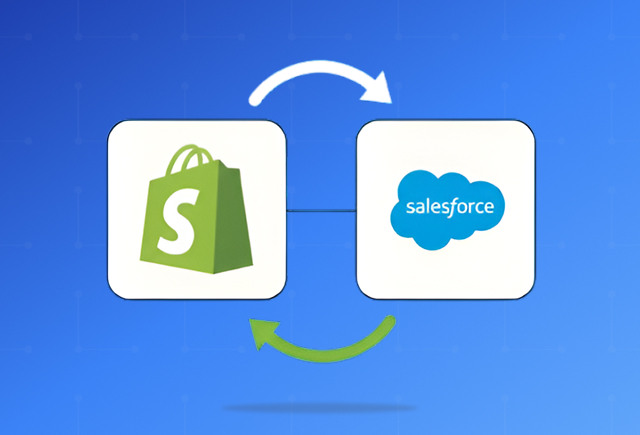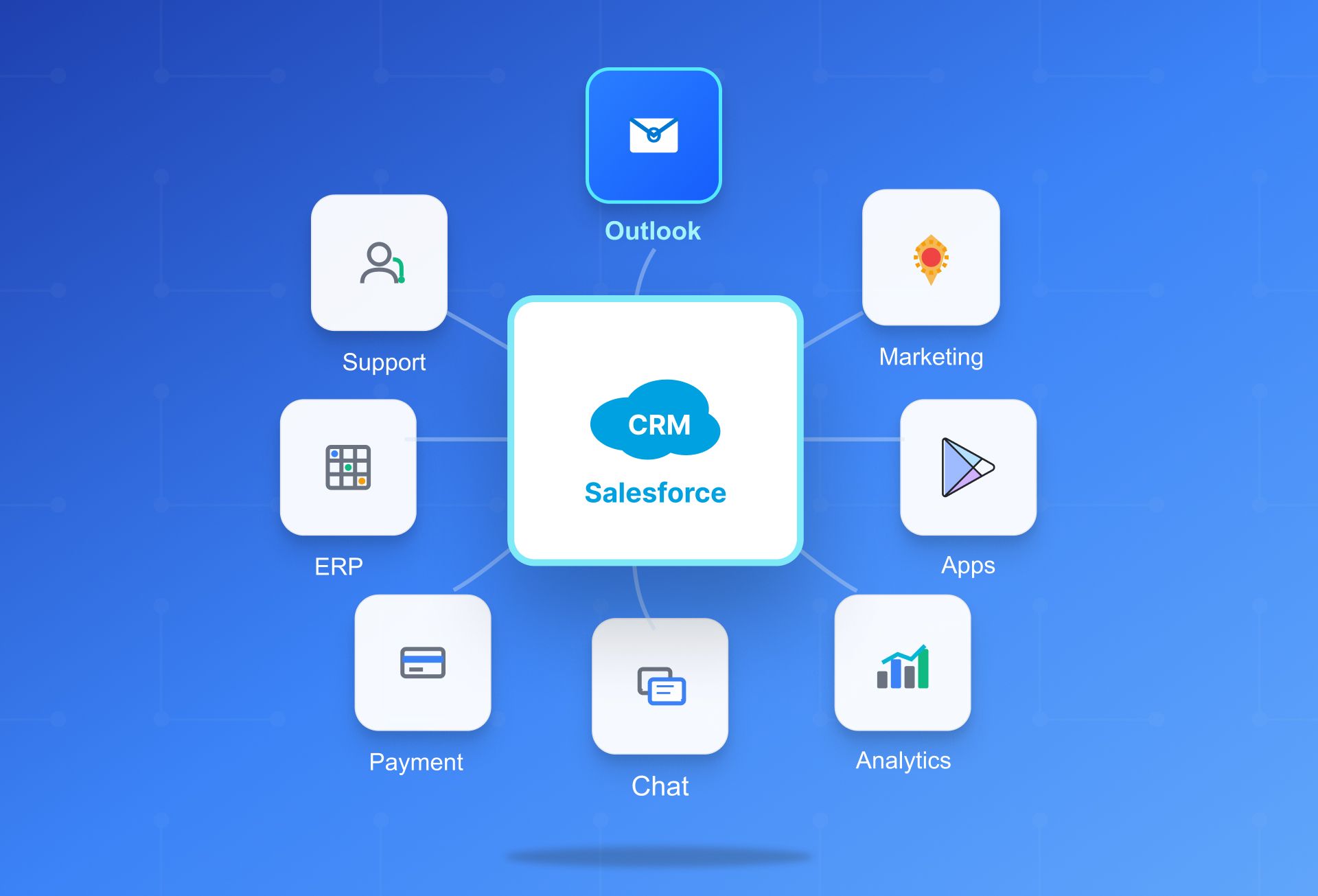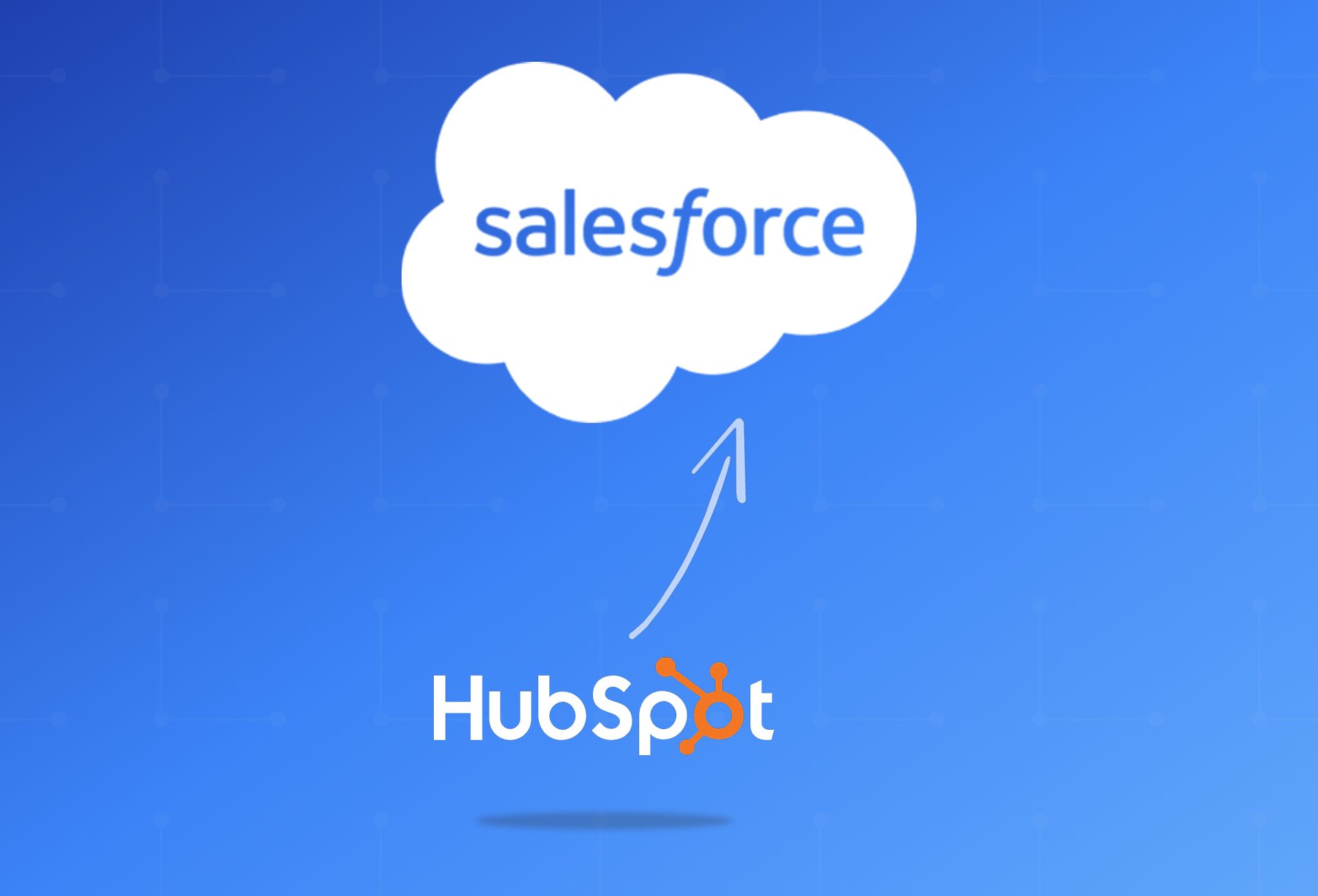What is Microsoft Fabric?
Oct 20, 2023 Aiswarya Madhu
Every click, every interaction, generates a stream of raw data waiting to be transformed into meaningful insights. Data is the lifeblood of businesses, driving informed decision-making, innovation, and competitive advantage. Recognizing the role of data, Microsoft introduced Microsoft Fabric, an all-in-one analytics platform designed to simplify the complex realm of data analytics.
Let's delve deeper into understanding Microsoft Fabric features, use cases, and benefits, so you can effectively react to market changes and stay ahead of the competition. Don't let market volatility catch you off guard; equip yourself with the right tools and knowledge to adapt and thrive.
On this page
What is Microsoft Fabric?
Microsoft Fabric is an innovative data analytics platform developed by Microsoft. It serves as an overarching umbrella that encompasses three core Microsoft data analytics products: Power BI, Azure Data Factory, and Azure Synapse.
Unlike its predecessors, Microsoft Fabric represents the third generation of data platforms, offering a seamless and integrated solution.
Traditionally, first-generation data platforms like SQL, SQL Data Warehouse, and HDInsight operated as isolated systems built on traditional data products.
Second-generation platforms, exemplified by Azure Synapse Analytics, introduced integrated experiences at the user interface level but still maintained a certain level of disconnection at the data level.
Microsoft Fabric, as a third-generation platform, takes a significant leap forward by not only unifying the user experience but also enabling data-level interoperability and insights powered by Azure AI. It is designed to be "lake-centric," emphasizing the importance of centralizing data lakes, and it is open, extensible, and supported by a shared platform. One of its key strengths lies in providing enterprise-grade data security, governance, and compliance, ensuring that organizations can trust the integrity and confidentiality of their data.

Microsoft Fabric Features [A Comprehensive Overview]
Microsoft Fabric stands out in the market with its distinct features, addressing common challenges in data analytics and integration. Here’s an in-depth look at the key aspects of Microsoft Fabric that make it a powerful tool for enterprises:
A Complete Analytics Platform
Microsoft Fabric offers a unified solution to manage and integrate various analytics projects, which typically depend on multiple supporting systems from different vendors. This integration can be complex and costly. Fabric simplifies this by providing a consistent user interface, architecture, and necessary tools within a single platform. This ensures that insights can be efficiently extracted and presented from diverse data sources.
Lake-Centric and Open
Data lakes often present challenges due to their complexity and potential for data duplication. Microsoft Fabric addresses these issues with its built-in SaaS multi-cloud data lake called “OneLake.” Similar to how Microsoft 365 integrates with OneDrive, Fabric’s workloads are seamlessly connected to OneLake. This integration eliminates data silos, offering a unified storage solution that facilitates easy data discovery and sharing among team members.
Artificial Intelligence Integration
Fabric integrates Azure’s OpenAI service at every level, enabling users to fully leverage their data’s potential. This integration allows developers to apply generative AI to customer data, aiding business users in discovering valuable insights. With Copilot embedded in every data experience, users can build machine learning models, develop dataflows, generate code, and visualize results through conversational language. Additionally, custom conversational experiences can be created by combining data with Azure OpenAI Service models and publishing them as plug-ins.
Empowerment for All Business Users
Fabric fosters a data-driven culture by making analytics accessible to everyone within an organization. It integrates deeply with everyday Microsoft 365 applications, transforming them into central hubs for uncovering and applying data insights. This democratization of data empowers all users to make informed decisions based on real-time analytics.
Cost Reduction through Unified Capacities
Combining multiple vendor products in a single project often leads to resource wastage due to idle computing capacities. Microsoft Fabric mitigates this issue by allowing the purchase of a single compute pool to power all workloads, such as data integration and data science. This unified capacity model reduces costs by ensuring that unused compute resources in one workload can be utilized by another, optimizing resource use and minimizing waste.
Streamlined Data Engineering and Data Science
Fabric simplifies data handling processes, enabling data engineers to focus on providing valuable data without worrying about integrating various products. Data scientists can access prepared datasets immediately, eliminating the need for data duplication and accelerating analysis.
Enhanced Collaboration
Fabric’s collaborative features, such as shared notebooks and live coding, enable teams to work together seamlessly. This enhances productivity and ensures consistency across projects.
Efficient Provisioning and Lifecycle Management
Fabric supports smooth provisioning and lifecycle management, with at least two environments recommended for development and production. Advanced ALM capabilities integrate with GitHub and Azure DevOps, streamlining continuous integration and deployment.
The Core of Microsoft Fabric: OneLake
At the heart of Microsoft Fabric’s integrated data analytics environment lies OneLake, a unified storage solution designed to simplify the way businesses handle and share their data. By bringing together all the data used in Fabric’s various workloads under one cohesive repository, OneLake provides a central hub where teams can collaborate more efficiently, maintain consistency, and reduce the complexity of managing multiple data sources.
What Makes OneLake Unique?
Centralized Data Access:
Instead of scattering data across different storage solutions, OneLake serves as a single, logical data repository. This centralization not only eliminates duplication but also ensures that all users work from the same, up-to-date dataset.
Collaborative Shortcuts:
OneLake allows teams to reference data stored in different parts of their organization without physically moving it. By using shortcuts, teams can share data seamlessly and keep everyone on the same page, improving productivity and ensuring that insights are based on consistent, reliable information.
Open and Compatible:
Built on Azure Data Lake Storage Gen2, OneLake supports a wide range of structured and unstructured data. Its open nature means that teams can leverage existing tools and workflows while benefiting from the unified environment Fabric provides.
Built-in Governance:
With data governance integrated into its design, OneLake ensures that compliance, security, and access controls are in place by default. Organizations can rest assured that their data is well-managed and secure, reducing risk and streamlining regulatory requirements.
How Microsoft Fabric Workloads Integrate with OneLake
OneLake isn’t just a storage system—it’s the backbone of every workload in Microsoft Fabric. From data engineering to business intelligence, OneLake enables these workloads to function seamlessly in a unified environment:
Data Factory: Connect and transform data with over 150 pre-built connectors and an intuitive interface, making data integration smoother and faster.
Synapse Data Engineering: Process and refine large datasets with tools that integrate effortlessly into the Lakehouse model, enabling collaboration and streamlined workflows.
Synapse Data Warehouse: Perform high-performance queries using a unified SQL engine that merges data warehousing with Lakehouse flexibility.
Synapse Real-Time Analytics: Analyze real-time data streams and gain instant insights using tools built around rapid data ingestion and KQL-based querying.
Synapse Data Science: Access a complete data science toolkit to build, train, and deploy advanced AI models within the same unified platform.
Data Activator: Automate responses to data patterns without coding, making repetitive tasks effortless and efficient.
Business Intelligence with Power BI: Bring data insights directly into Microsoft 365 apps, empowering users to make informed decisions quickly.
Uncover the power of data analytics with Microsoft Power BI! Learn about its features, implementation tips, and FAQs in our latest blog post.
Microsoft Fabric Use Cases & Applications
Microsoft Fabric is a robust platform that offers comprehensive data integration capabilities across a range of industries. Let’s explore how different sectors leverage Microsoft Fabric through practical examples:
Manufacturing
Microsoft Fabric transforms manufacturing by integrating data from various sources to enhance operational efficiency. For example, a smartphone manufacturer can use Fabric to gather data from IoT sensors embedded in their production lines. This integration enables the manufacturer to:
- Optimize Production: Analyze real-time data to streamline production schedules and reduce bottlenecks.
- Enhance Quality Control: Detect anomalies early in the production process to minimize defects.
- Improve Supply Chain Management: Predict inventory requirements accurately to ensure timely procurement.
- Minimize Downtime: Implement predictive maintenance by monitoring equipment health and scheduling timely interventions.
- Calculate OEE: Use overall equipment effectiveness metrics to identify and eliminate inefficiencies.
Insurance
In the insurance industry, Microsoft Fabric facilitates advanced risk assessment and customer insights. Consider an insurance company that uses Fabric to integrate data from policy management systems and IoT devices like vehicle telematics. This enables the insurer to:
- Enhance Risk Assessment: Develop predictive models to assess risks more accurately.
- Improve Underwriting: Tailor insurance policies based on comprehensive customer profiles.
- Streamline Claims Management: Quickly process and verify claims using automated workflows.
- Personalize Customer Interaction: Offer customized insurance products and services based on detailed customer data.
Non-Profit Organizations
Non-profits benefit from Microsoft Fabric by integrating data from various operational sources. For instance, a global health NGO might use Fabric to consolidate data from donor management systems, volunteer databases, and social media platforms. This integration helps the NGO to:
- Allocate Resources Effectively: Ensure that resources are directed where they are most needed.
- Measure Program Impact: Track the performance of different programs and initiatives.
- Engage Stakeholders: Use data insights to communicate effectively with donors and volunteers.
- Set Strategic Goals: Develop data-driven strategies to achieve their mission objectives.
Banking, Financial Services & Insurance (BFSI)
In the BFSI sector, Microsoft Fabric supports customer experience enhancement, risk management, and regulatory compliance. A bank might use Fabric to integrate data from core banking systems, trading platforms, and customer service tools. This allows the bank to:
- Improve Customer Experience: Offer personalized banking services based on customer behavior analysis.
- Mitigate Risks: Identify and manage financial risks through advanced analytics.
- Discover New Revenue Streams: Analyze market trends to identify opportunities for new financial products.
- Ensure Compliance: Automate compliance reporting and monitor regulatory requirements.
Logistics & Supply Chain
Logistics companies use Microsoft Fabric to optimize their supply chain operations. For example, a global logistics provider can integrate data from ERP systems, GPS trackers, and IoT sensors. This enables the provider to:
- Optimize Routes: Use real-time data to determine the most efficient delivery routes.
- Enhance Predictability: Predict and mitigate potential delays in the supply chain.
- Reduce Costs: Streamline operations to reduce fuel and labor costs.
- Improve Service Levels: Ensure timely and accurate deliveries, enhancing customer satisfaction.

What are the Advantages of Microsoft Fabric?
Microsoft Fabric is a powerful platform designed to meet the diverse data integration and analytics needs of modern businesses. Here are some key benefits of Microsoft Fabric:
Comprehensive End-to-End Capabilities
Microsoft Fabric provides a complete suite of tools that cover all aspects of data management, including integration, storage, reporting, machine learning, and application development. This ensures that businesses have everything they need in one unified platform, simplifying operations and enhancing efficiency.
Flexibility to Handle Diverse Data Types
The platform is equipped to manage various data types, whether structured, semi-structured, or unstructured. It supports a wide range of workloads, making it suitable for different industries and applications. This flexibility allows businesses to use a single platform for all their data needs.
Cloud-Native Solution
As a cloud-native platform, Microsoft Fabric leverages Azure’s robust infrastructure. This provides businesses with scalability, high availability, and advanced security features. Being cloud-based also means lower infrastructure costs and easier maintenance compared to on-premises solutions.
Code-Free, Visually Designed Solutions
Microsoft Fabric supports low-code/no-code development, allowing users to create workflows and integrations through an intuitive visual interface. This reduces the need for extensive programming skills, enabling faster development and deployment of solutions.
Enterprise-Grade Platform
Microsoft Fabric offers extensive governance and administration capabilities, making it ideal for enterprise use. Features include role-based access control, data encryption, compliance with industry standards, and detailed auditing. These capabilities ensure that businesses can maintain high levels of security and compliance.
Deep Integration with Microsoft Ecosystem
The platform seamlessly integrates with other Microsoft products like Azure Synapse, Power BI, and Dynamics 365. This deep integration enhances productivity by allowing users to leverage the full suite of Microsoft tools in a cohesive manner.
Extensive Ecosystem of Extensions
Microsoft Fabric benefits from a vast ecosystem of Microsoft and third-party extensions. These extensions expand the platform’s functionality, providing additional connectors, advanced analytics tools, and custom applications. This ecosystem allows businesses to tailor the platform to their specific needs.
How Microsoft Fabric Reduces Costs?
Unified Compute Capacities
Today's analytics systems often require purchasing and managing computing resources across multiple disparate products and vendors. This can result in significant waste, as unused capacity in one system cannot be utilized by another. Fabric addresses this by providing a single, unified pool of computing capacity that powers all of its workloads. Customers can purchase a single set of computing resources that can be freely utilized across Fabric's various analytics capabilities, such as data integration, data engineering, data warehousing, and business intelligence.
Simplified Resource Management
With the all-inclusive approach of Fabric, customers no longer have to provision and manage computing resources across multiple systems. This simplifies the overall resource management and reduces the overhead associated with purchasing, configuring, and maintaining separate computing infrastructures.
Reduced Data Duplication
Fabric's OneLake data lake provides a centralized, unified data store that can be accessed by all of its workloads. This helps eliminate the need to duplicate data across different systems, which can significantly reduce storage costs and data management overheads.
Seamless Scalability
Fabric's cloud-native architecture allows customers to scale computing resources up or down as needed, without having to overprovision or manage complex infrastructure. This flexibility helps customers optimize their costs and only pay for the resources they actually consume.
Elimination of Integration Costs
By providing a comprehensive, integrated analytics platform, Fabric helps customers avoid the time and expense of integrating multiple disparate products and services from different vendors. This reduces the overall cost of ownership for the analytics solution.
Maximizing ROI with Microsoft Fabric: Key Insights from Forrester's TEI Study
The Forrester Total Economic Impact™ (TEI) study reveals that deploying Microsoft Fabric delivers a remarkable 379% ROI over three years. Companies can realize significant cost savings, with a net present value (NPV) of $9.79 million. Key productivity gains include a 25% increase in data engineering efficiency, resulting in $1.8 million in savings, and a 20% boost in business analyst output, adding $4.8 million in savings.
Enhanced business outcomes translate to increased profits, with better data insights leading to $3.6 million in profit growth. Additionally, Fabric contributes to employee satisfaction, reducing attrition by 8%, and offers substantial infrastructure cost savings of up to $779,000 over three years. These benefits, combined with the platform’s flexibility and advanced analytics capabilities, underscore Microsoft Fabric's value in transforming data management and driving business success.
Microsoft Fabric Implementation [Complete Steps]
Implementing Microsoft Fabric can significantly enhance your organization's data management and analytics capabilities. Follow these steps to set up and utilize Microsoft Fabric effectively:
Step 1: Setting Up the Microsoft Fabric Environment
Create and Configure the Data Lake
- Log into your Azure portal.
- Create a new Data Lake Storage Gen2 account.
- Configure account settings for scale, performance, and security.
- Set up file systems within the Data Lake to organize data efficiently.
Deploy Data Engineering Solutions
- Provision an Azure Databricks workspace to leverage Apache Spark.
- Set up an HDInsight cluster for big data processing using Hadoop, Spark, or HBase.
- Deploy Azure Synapse Analytics for an integrated big data and data warehousing workspace.
Configure Data Integration Pipelines
- Create a new Azure Data Factory instance.
- Configure necessary connections to data sources.
- Design and implement data pipelines using Data Factory’s interface or code.
- Test and monitor pipelines to ensure data integrity.
Step 2: Data Ingestion and Movement
Ingest Data into the Data Lake
- Use Azure Data Factory for batch processing and building data pipelines.
- Utilize Azure Event Hubs for high-throughput data streams, such as IoT telemetry.
- Ingest data directly into Azure Data Lake Storage using data connectors and tools.
Manage Data Movement
- Create a streamlined process to identify data sources, formats, and destinations.
- Set up monitoring tools within Data Factory to track data movement.
- Implement security best practices for data encryption and access controls.
Step 3: Data Transformation and Preparation
Transform Data Using Engineering Tools
- Use Azure Databricks notebooks for interactive and batch data transformation jobs.
- Optimize performance with data partitioning and clustering in Databricks or HDInsight.
Prepare Data for Analysis
- Clean and structure data using serverless SQL pools in Azure Synapse.
- Develop data models ready for reporting and querying within the Synapse environment.
Step 4: Real-Time Analytics
Implement Real-Time Data Processing
- Use Azure Stream Analytics for real-time analysis of streaming data from devices and sensors.
- Harness Apache Kafka within an HDInsight cluster for managing real-time data feeds.
Leverage Real-Time Insights
- Employ Machine Learning Services for adaptive analytics and AI.
- Visualize real-time data using Microsoft Power BI or Azure Data Studio dashboards.
Microsoft Fabric VS Power BI
Microsoft Fabric and Power BI serve distinct yet complementary roles within the data ecosystem. While Power BI specializes in creating interactive dashboards and intuitive data visualizations, Microsoft Fabric offers a complete platform that spans data engineering, machine learning, and real-time analytics.
Here are the key differences between Microsoft Fabric and Power BI.
Power BI:
Ideal for teams focused on visualizing data and generating insights quickly, Power BI’s user-friendly interface and diverse visualization tools make it accessible for both technical and non-technical users. Its tight integration with other Microsoft products also ensures a seamless reporting experience.
Microsoft Fabric:
Fabric goes beyond visualization, providing a unified environment for data processing, transformation, and advanced analytics. With integrated AI tools and robust scalability through Azure, Fabric is best suited for organizations managing complex data workflows, large-scale datasets, and cross-functional data teams.
Ultimately, choosing the right solution depends on your data complexity and organizational needs. If your primary goal is accessible, intuitive data visualization, Power BI is a natural fit. If you require an all-encompassing platform to handle data at scale and deliver advanced insights, Microsoft Fabric is the more comprehensive choice.
Read more about Microsoft Power BI
Microsoft Fabric Pricing & Subscription Options
Microsoft Fabric, the all-in-one analytics platform, offers users a range of capacity options to meet their computational needs. These capacity units, represented by different SKUs (Stock Keeping Units) like 'F2,' provide varying levels of processing power and resources within the platform. Understanding these SKUs is essential for users to make informed decisions about their computational requirements and associated costs. In the table below, we break down the capacity SKUs, their corresponding capacity units (CUs), and the hourly and monthly pricing, simplifying the choices available within Microsoft Fabric.
| Sku | Capacity (CU) | Hourly Cost | Monthly Cost |
|---|---|---|---|
| F2 | 2 | $0.36 | $262.80 |
| F4 | 4 | $0.72 | $525.60 |
| F8 | 8 | $1.44 | $1,051.20 |
| F16 | 16 | $2.88 | $2,102.40 |
| F32 | 32 | $5.76 | $4,204.80 |
| F64 | 64 | $11.52 | $8,409.60 |
| F128 | 128 | $23.04 | $16,819.20 |
| F256 | 256 | $46.08 | $33,638.40 |
| F512 | 512 | $92.16 | $67,276.80 |
| F1024 | 1024 | $184.32 | $134,553.60 |
| F2048 | 2048 | $368.64 | $269,107.20 |
For detailed pricing information, please visit the official Microsoft Fabric page.
Conclusion
Navigating data doesn't have to be overwhelming. With Microsoft Fabric, you have a powerful tool to turn data management into a seamless and beneficial process. This isn't just about offering a service; it's about providing an opportunity to redefine your relationship with data and shape a more efficient future.
At Nalashaa Digital, we're aware of the questions and concerns you might have. Our dedicated team is here to support and guide you through every step of the journey.
Let's dive into the capabilities of Microsoft Fabric and Power BI Fabric together. Discover how these tools can transform your organization's data management, making your data a powerful asset rather than a challenge.
Frequently Asked Questions
To use Microsoft Fabric, follow these steps:
- Access the Platform: Sign up via the Azure portal.
- Set Up OneLake: Consolidate data in OneLake.
- Choose Workloads: Select workloads like Data Factory for integration or Synapse for analytics.
- Data Integration: Use Data Factory to connect and orchestrate pipelines.
- Analyze Data: Use Synapse for queries and insights.
- Visualize Insights: Create reports in Power BI.
- Collaborate: Engage with your team through shared workspaces.
Recent Posts

Salesforce Shopify Integration [A Complete Guide]
Dec 03, 2025

Salesforce Outlook Integration Guide
Oct 30, 2025

HubSpot Salesforce Integration Guide [All You Need to Know]
Oct 28, 2025
Category
Our Expertise
About Author

Aiswarya Madhu
Aiswarya Madhu is an experienced content writer with extensive expertise in Microsoft Dynamics 365 and related Microsoft technologies. With over four years of experience in the technology domain, she has developed a deep understanding of Dynamics 365 applications, licensing, integrations, and their role in driving digital transformation for organizations across industries.
Never Miss News
Want to implement Dynamics 365?
We have plans which will meet your needs, and if not we can tweak them around a bit too!


